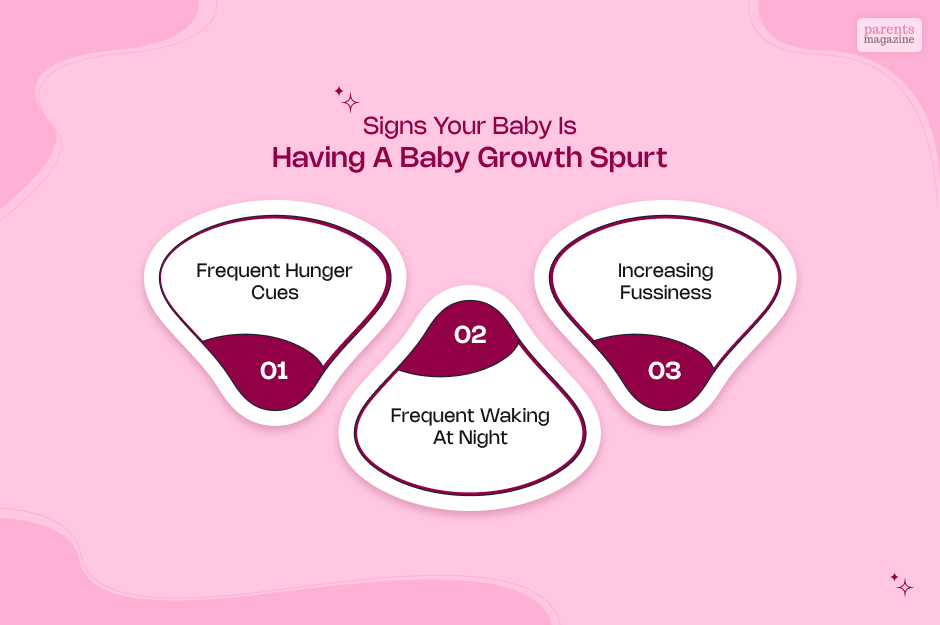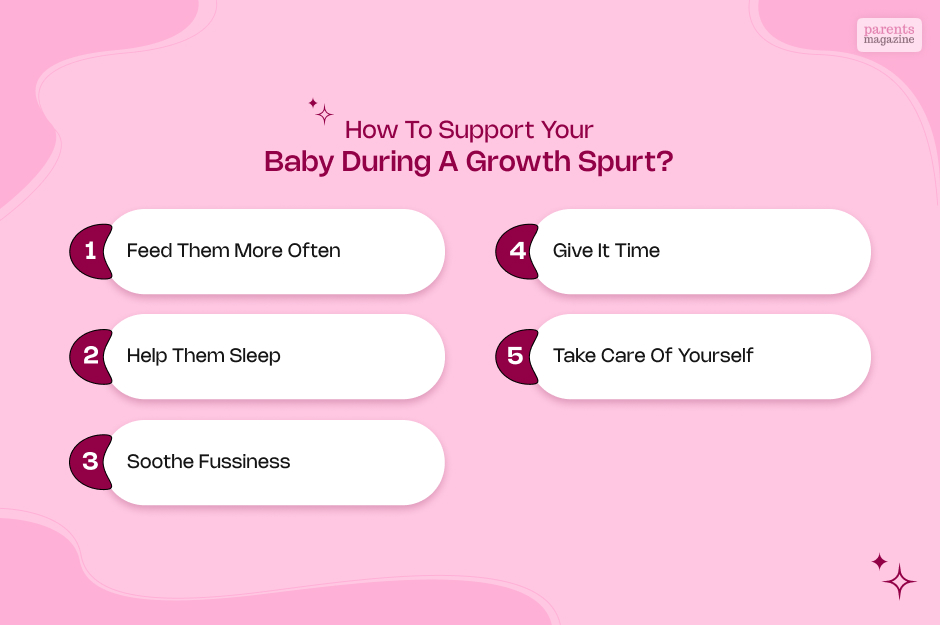
Baby Growth Spurts: What Every Parent Needs to Know!
Once you become a parent, there are newer challenges to deal with every day. Baby growth spurts are one of those challenges.
Right when you thought your baby didn’t want any more breastmilk, you were surprised. They start crying out from the other room. Then they start to become fussier, and after a few weeks of constantly fulfilling their hunger cues, you see they have gotten an extra few pounds on their body.
Well, that’s a growth spurt for your newborn. In this article we have discussed how it works and how you can deal with it as a parent. So, let’s read without a doubt.
What Are Baby Growth Spurts?

Babies experience rapid and fast growth in the first few months of their life. It’s almost as if they have grown overnight. This type of rapid growth happens due to something that’s called rapid growth spurts in babies.
Within the age of 10 months to 12 months, babies triple down in weight and add ten more inches to their weight.
Yes, your baby can also have steady growth where it will feel like they are growing little by little. But it’s also fairly common for your babies to have growth spurts, which makes them proliferate within a short time interval.
Signs Your Baby is Having a Baby Growth Spurt

So, if your infant eats quite often and shows a rapid growth rate, does it mean they are having growth spurts? You can recognize the baby growth spurts by following these signs in your baby –
Frequent Hunger Cues
If your baby’s hunger increases quite often (within an hour or two or within 30-minute intervals), it can suggest growth spurts. For breastfeeding mothers, the newborn’s frequent hunger cues are actually sound.
Your baby’s hunger cures also affect your milk production for the baby’s growing appetite. Also, older babies may want to drink more when they have a baby growth spurt.
Frequent Waking at Night
Even if your baby is used to frequent 5 to 6 hours of sleep, they may not do so if they are having a growth spurt. In this case, your little one may just wake up during the night for a midnight snack. Even when the babies are around 10 to 11 months old, it’s common for them to wake up in the middle of the night (around 2 p.m. to 4 p.m.).
Increasing Fussiness
Your Baby’s Fussiness Might Increase if they are having growth spurts. He’ll be frequently latching and unlatching since he wants more milk now. On the contrary, your milk production may also not be up to speed. So, the nights may become sleepless for both you and your little one.
How Long Does Baby Growth Spurt Last?

Right now, it feels like your baby won’t stop eating, but know that your baby’s growth spurt will last for just a few days, and then life will go back to normal. There shouldn’t be much problem after your baby completes a growth spurt.
Also, there’s no specific mention of when your baby’s growth spurt will end. It can last for days, but there’s no particular number against it. The best way to cope with it is by feeding your baby when he feels hungry.
How to Support Your Baby During a Growth Spurt?

No, it’s not easy to handle the growth spurts of your baby especially the feeding demand of it. Here are a few ways you can hold your newborn during growth spurts –
Feed them More Often
Also, sometimes, babies need to be fed more often to stimulate their breast milk production. This way, they’ll have more to feed. If you have a formula fed baby, increase the amount of formula during each of the feeding times.
Help them Sleep
You can also handle this by creating a calm and soothing environment. Create a bedtime routine for your baby and put low lights in the room or leave it completely dark. This way, you’ll help them fall asleep.
Soothe Fussiness
The first step is always feeding. But what if your baby doesn’t stop crying even after feeding? Try putting them to rest by rocking, cuddling, swaying, or singing to them.
Give it Time
Growth Spurts of your baby can be tiring and challenging for the baby and the mother both. Sometimes, it’s best to leave them be and be patient. All you can do is tell yourself that this, too, shall pass.
Take Care of Yourself
While handling your baby during a growth spurt is the most difficult task, you can’t do it by turning a blind eye to yourself. Get enough rest, nourishment, and support to prepare yourself to handle more spurts. Babies have growth spurts around 10 to 14 days and then around 4 to 6 weeks.
Dealing With Growth Spurts: Here’s How to Do It

The first step for dealing with your baby’s growth spurts is identifying and acknowledging that they are hitting a growth spurt. Now, prepare yourself for the hustle. Make sure to take good care of yourself and have people around to help you with household chores and other work.
When you have someone to help you, you can make Time for the extra breastfeeding your little one needs. If you have to sit through the caregiving phase, you can watch movies or read books to make it easy for you.
Also, when you have to breastfeed your baby more often, stick it out. They get fussier and crankier when they are hitting the growth spurt. Regular feedings will only help you boost breast milk production so that you are ready for more rounds when you are hungry.
But should you be concerned during the growth spurts? Well, if they are gaining more weight and wetting more diapers a day, then there’s no need to worry. With consistent and healthy feeding, your baby will grow in size. But, if you feel like there’s something concerning about the baby’s behavior, consult a healthcare professional.
Tips for Managing Feeding Demands

It’s not easy to meet the baby’s feeding demands during the growth spurts. But it would help if you knew these tips and incorporated them into your daily routine to make it easy for your baby –
Feed When They Want It
Feed your baby on demand. You should prepare your baby for a feeding session whenever they show their hunger cues. If you have trouble producing breastmilk, you can even try breast compression to help with milk flow. But, feed your baby more frequently if they show signs of hunger during this Time.
Cluster Feeding
Your baby might want to cluster feed at this phase. This is short periods of feeding with short intervals.
Increase Daytime Feeding
Babies with growth spurts often have trouble staying asleep. One reason for this could be the need for more feeding time. If your baby wakes up in the middle of the night quite frequently, build a feeding habit during the day to fulfill the maximum amount of their hunger.
Monitor Diaper Changes
One of the most important things about handling your baby’s growth spurts is to know when to stop feeding. Yes, they need to feed more and more often. But you should also know when the Time to stop is. If your baby is wetting the diapers too much, then they may have had enough. Diaper changes suggest adequate milk intake.
What About Long-Term Development?
When considering the long-term development of your baby’s growth spurts, it’s critical to understand that these rapid instants of growth are expected. Understanding that these are normal parts of your child’s overall development is also vital.
Eventually, these growth spurts add to your baby’s long-term growth and benefit. The most noticeable growth spurt changes happen for your child during childhood and puberty. There will be smaller growth spurts in between major ones. But, throughout their life, your child will continue to grow steadily until they mature.
You May Like To Read This:
Already have an account?
Sign In
Create your account
User added successfully. Log in







